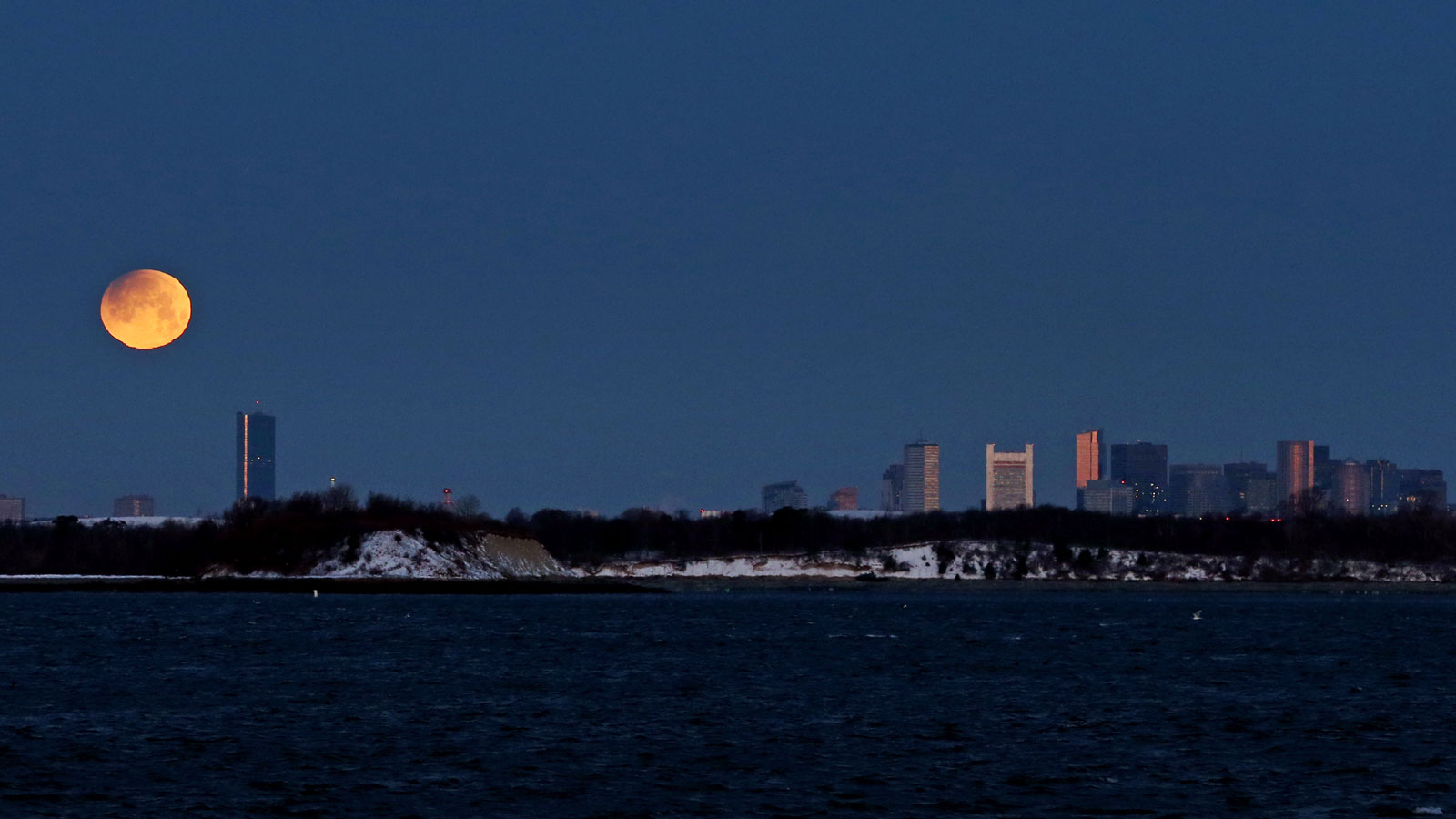Preparing for the effects of climate change is not just about being ready for the next extreme weather event, like a hurricane, wildfire, or heat wave. As glaciers and ice sheets continue to melt and more heat is trapped in the ocean, causing it to expand, sea-level rise will exacerbate a more mundane problem for those who live in coastal areas: so-called “sunny-day” flooding.
Scientists have long warned that rising seas will bring high tides closer to buildings and roads and eat away at the shoreline. But it’s not just climate change making this problem worse. A new study by NASA scientists published in the journal Nature Climate Change warns that in just over a decade the stars will literally align to make tidal flooding occur more often and become more destructive.
Well, technically not the stars. The study looked at regular fluctuations or “wobbles” in the moon’s orbit around the Earth that occur on an 18.6 year cycle. Over this period, the angle between the moon’s orbit and the Earth’s equator grows and shrinks, resulting in changes in the moon’s gravitational pull on the oceans. During half of this cycle, the moon’s pull serves to amplify the earth’s tides, leading to higher high tides and lower low tides. the researchers found that this moon wobble effect is going to boost the number of flooding events significantly.
Scientists already know that the number of tidal flooding events has been increasing with sea-level rise. Sunny-day flooding, which is when tides reach about 2 feet above the daily average high tide, is already more than twice as likely as it was in 2000, according to the National Oceanic and Atmospheric Administration. The study found that in the mid-2030s, when this period of higher high tides comes around again and sea levels are higher due to climate change, almost all U.S. mainland coastlines will see a jump in the number of sunny-day floods, with the effect lasting for about a decade. During that period, at times when the sun, moon, and Earth line up just so, certain areas could see clusters of floods for a month at a time, with some cities seeing floods almost every day.
Rob Moore, director of the water and climate team at the Natural Resources Defense Council, said in an email that this study “brings some alarming new information to light, which is not incorporated into any official projections of future sea level rise, its impacts, or projected future incidents of coastal flooding. Every local and state official with a coastline should be deeply concerned about this.”
While sunny-day flooding isn’t the type of severe flooding you see during hurricanes or intense rainstorms, in some ways it can be just as destructive. “If it floods 10 or 15 times a month, a business can’t keep operating with its parking lot under water,” said Philip Thompson, an assistant professor at the University of Hawaii and the lead author of the study, in a statement. “People lose their jobs because they can’t get to work. Seeping cesspools become a public health issue.”
On top of that, a tropical storm or hurricane could intersect with one of these periods of lots of sunny-day floods, which has implications for storm surge projections, said Moore.
The uptick in tidal flooding won’t hit everywhere in the U.S. at the same time. The researchers predict that Hawaii, the Pacific Coast, and the Gulf of Mexico will see clusters of sunny-day floods in the mid-2030s, mid-2050s and early 2070s, while the northern Atlantic coast won’t experience the burst of flooding until the mid-2040s, and then again in the early 2060s.
“From a planning perspective, it’s important to know when we’ll see an increase,” said co-author Ben Hamlington of NASA’s Jet Propulsion Laboratory in a statement. This expected increase in flooding will help coastal urban planners weigh adaptation measures like raising buildings, building sea walls, nourishing beaches, redesigning sewage systems, and in some cases, moving communities away from the shore altogether.
“We’re already way behind the curve of sea level rise and we already knew the curve was getting steeper,” said Moore. “I hope this will bring additional urgency to jumpstart the nation’s efforts to get our communities prepared.”



